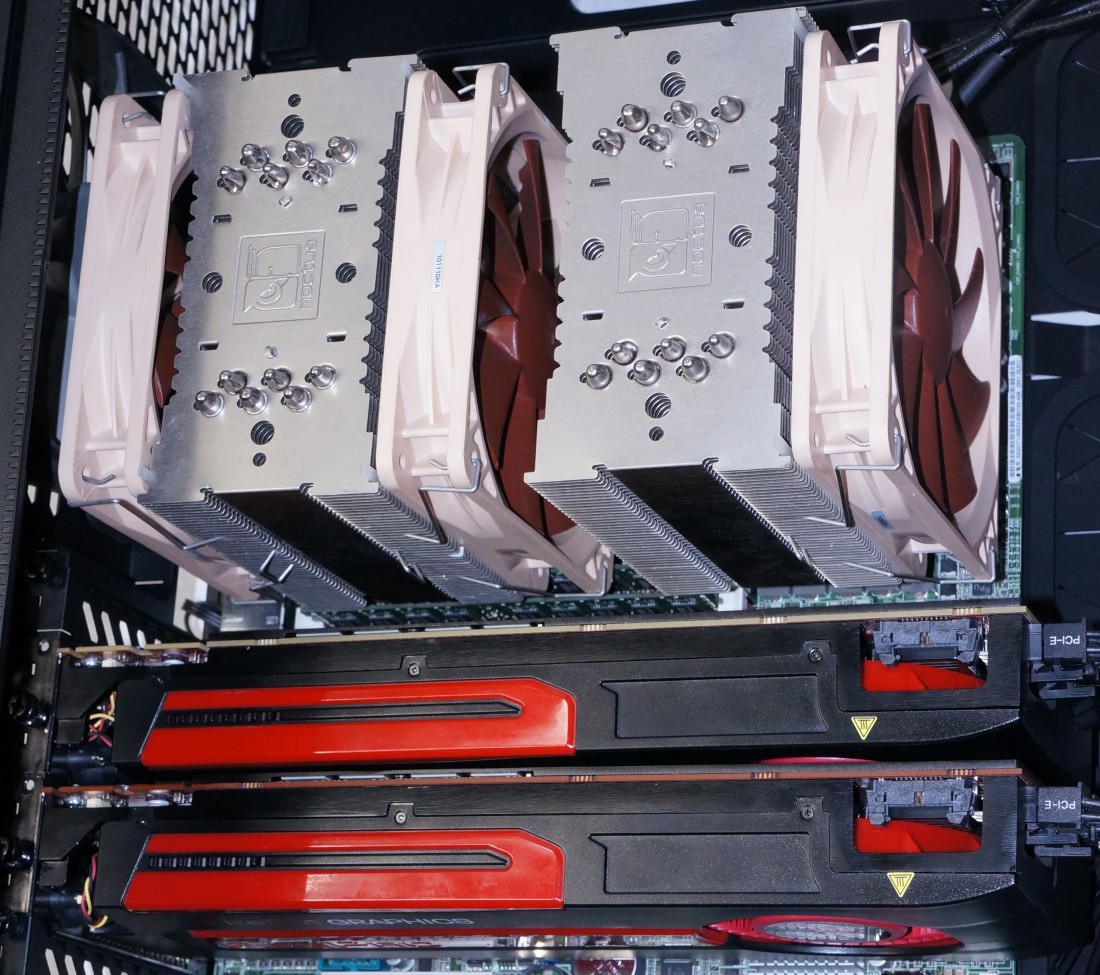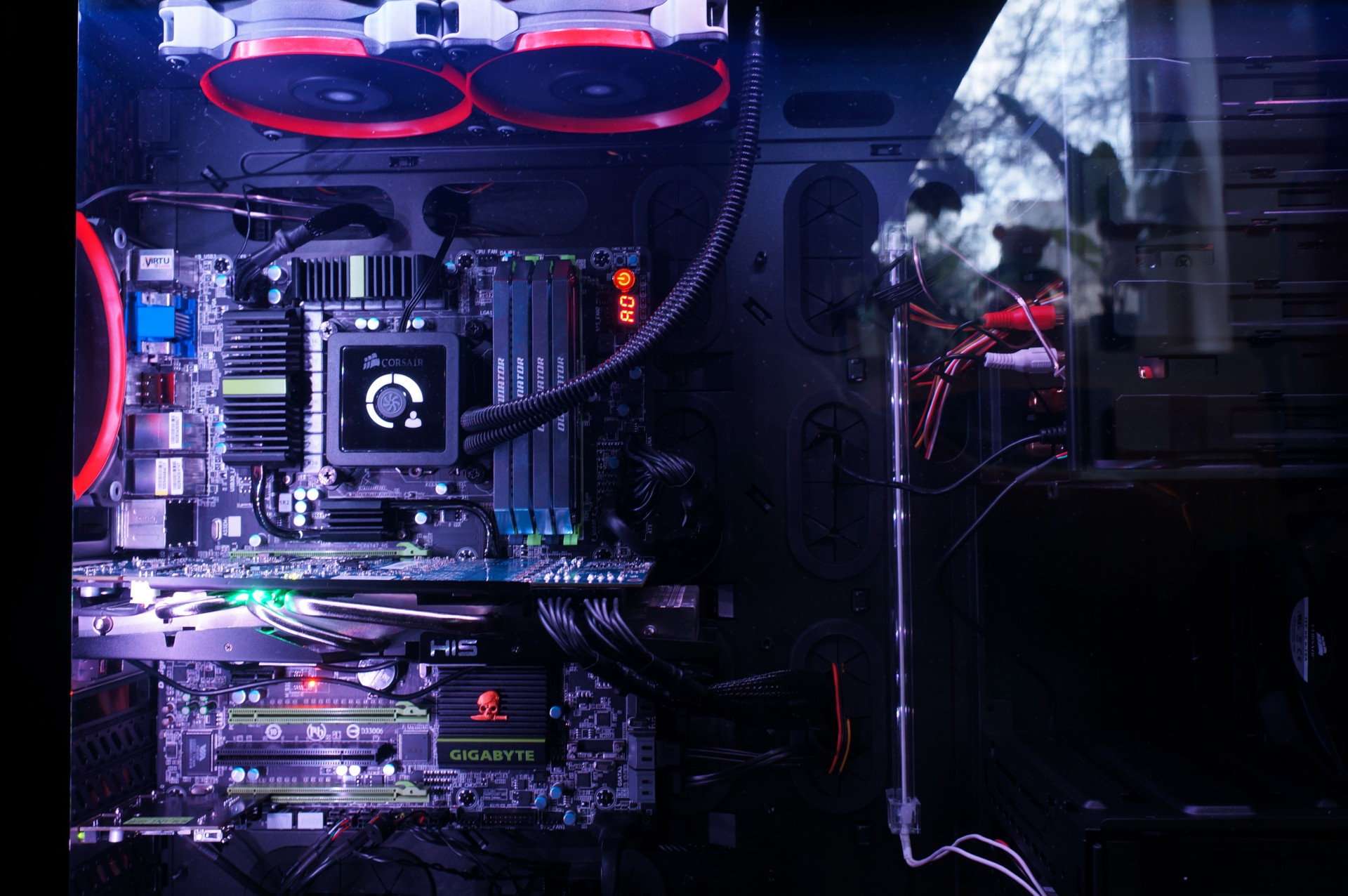Corsair Obsidian 900D Review: Making Room For High-End Gear
Corsair already offers a heavy tower case called the Obsidian 800D. Now, the company is one-upping itself with the Obsidian 900D. Is this a genuine high-end enclosure, a bomb shelter, or a mess of sheet metal? We put the case through our bevy of tests.
Results: Temperatures And Acoustics
Measurements: The Workstation Build
The workstation build consists of two Opteron 4284 CPUs (AMD's Valencia design running at 3 GHz plus Turbo Core), wielding 16 total cores on an Asus KCMA-D8 motherboard. Two Noctua NH-U12DO A3 coolers keep the high-end combination running stably. We populate the platform with 32 GB of Kingston DDR31033 ECC-capable memory. Aside from our processors, the two other major sources of heat are a pair of AMD FirePro W9000 graphics cards, each of which employs a Tahiti GPU. Under load, the professional workstation cards draw more than 400 W.
Adding 250 W for the CPUs and a dozen or so watts for the hard drives, we have a 700+ W system that generates massive heat. A large tower case should be able to handle that easily though, right?
We load up each CPU core using LinX, and exercise the graphics cards with a mathematical simulation. When it comes time to take sound level measurements, however, I remove the graphics cards because their fans are simply too loud. They drown out what we're truly trying to evaluate here: the case and its fans. With a constant room temperature of 72°F and a microphone 20" away from the upper-left corner of the case, diagonally at a 45-degree angle, we look to replicate a user sitting in front of a workstation.
The CPU temperatures in the table below are the average Tcore results for each CPU separately.
| Header Cell - Column 0 | Stock Fans, 12 V | Stock Fans, 7 V | Fans Off |
|---|---|---|---|
| CPU | 132° F / 133° F | 134° F / 137° F | 137° F / 141° F |
| Graphics Cards | 165° F / 171° F | 169° F / 170° F | 174° F / 180° F |
| Hard Disks | 90° F / 93° F / 93° F | 93° F / 95° F / 95° F | 97° F / 97° F / 97° F |
| Sound Level (CPU Only) | 42.7 dB(A) | 38.2 dB(A) | 33.7 dB(A) |
We can draw three conclusions after taking these measurements. First, the stock fans are still audible at 7 V, but they barely contribute to the case's cooling. Second, the graphics cards benefit more than the CPUs from a stream of cool air. And third, it is admirable how quietly and effectively the two Noctua coolers, positioned back to back, get rid of each CPU's heat. I adjusted the speed of Noctua's fans in such a way that they don’t interfere with each other, but form a cooling cascade.
Measurements: The Gaming Rig
Get Tom's Hardware's best news and in-depth reviews, straight to your inbox.
Naturally, I also wanted to test a gaming rig, forgoing air cooling in favor of a closed-loop liquid cooler on our CPU. We ended up using Corsair's H100, sporting a large 11" radiator that gets swallowed up when we install it at the top of this Obsidian 900D. Although the configuration we're using easily handles the processor's heat, HIS' HD 7970 X² card, factory-overclocked to 1.3 GHz, dissipates a whopping 300 W.
Once again, we used LinX to load up the CPU and an OpenCL-accelerated app to tax the graphics card. This system generated as much thermal energy as it could.
So, how does the gaming rig fare? Remember, we swapped out all the fans for this configuration and added Scythe's controller. As with the workstation, we yanked the graphics card for measuring the case's sound level. And the results are impressive.
| Header Cell - Column 0 | Fans 100% | Fans 50% | Fans 25% |
|---|---|---|---|
| CPU | 130° F | 138° F | 148° F |
| Graphics Card | 172° F | 172° F | 178° F |
| Hard Disk | 91° F / 93° F / 93° F | 93° F / 93° F / 95° F | 93° F / 95° F / 95° F |
| Sound Level (CPU Only) | 40.1 dB(A) | 35.3 dB(A) | 33.2 dB(A) |
Compared to the workstation test with its stock fans turned off, our replacements are less noisy spinning at 25%. How is that even possible? By switching over to liquid cooling, the processor heat sinks and fans get factored out. With one Ivy Bridge-based processor in the box and no graphics card installed, the system's total power consumption is only around 110 W. The result? Drastic measures yield drastic results. At 110 W, the gaming build comes nowhere near overwhelming the gigantic Obsidian 900D. Compared to the older Obsidian D800, Corsair got it all right this time around.
Current page: Results: Temperatures And Acoustics
Prev Page An Illuminating Case Mod Next Page Corsair's Obsidian 900D: Big, Bold, And Beautiful
Igor Wallossek wrote a wide variety of hardware articles for Tom's Hardware, with a strong focus on technical analysis and in-depth reviews. His contributions have spanned a broad spectrum of PC components, including GPUs, CPUs, workstations, and PC builds. His insightful articles provide readers with detailed knowledge to make informed decisions in the ever-evolving tech landscape
-
slomo4sho Thanks for including the acoustics and temperature for a workhorse in addition to the gaming rig.Reply -
kitsunestarwind I am seriously waiting for this to be come available in Australia, I have the 800D , I love it, but I have no room left and I want/Need more liquid cooling Rad space without resorting to Case Mods, The Corsair 900D will do me perfectly and hopefully won't look so fullReply -
slicedtoad ^yeah, I've never seen any computer related benchmarks done in Fahrenheit , lol.Reply
Very nice review though, Corsair makes some sweet cases, second only to the custom suppliers (mountain mods and the others) but much cheaper. -
JJ1217 kitsunestarwindI am seriously waiting for this to be come available in Australia, I have the 800D , I love it, but I have no room left and I want/Need more liquid cooling Rad space without resorting to Case Mods, The Corsair 900D will do me perfectly and hopefully won't look so fullReply
Be prepared to fork out an extra $120 because of the simple fact we're from Australia.
-
Vatharian I don't fully understand your review. Workstation-class rig is up to the challenge for exploring 900D abilities, but gaming rig? You slap off-the-shelf closed loop watercooler on the midrange CPU (TDP wise), one simple GPU and call it 'watercooled system'? What's the point? Get two or three water coolled GPUs in addition to CPU, set up one loop and them evaluate if the case is suitable for serious LC&OC, and if it's possible to arrange radiators such way to get rid of the heat and not kill usability. Point is: for such class of case you put low-end gaming rig. It doesn't tell us will it perform if serious system is inside. If the case performs with high-wattage rig, it will do for any smaller one, but not necessarily the other way around.Reply -
Idonno My 800D preforms great with a high end system and there is every indication the 900D is even better.Reply

